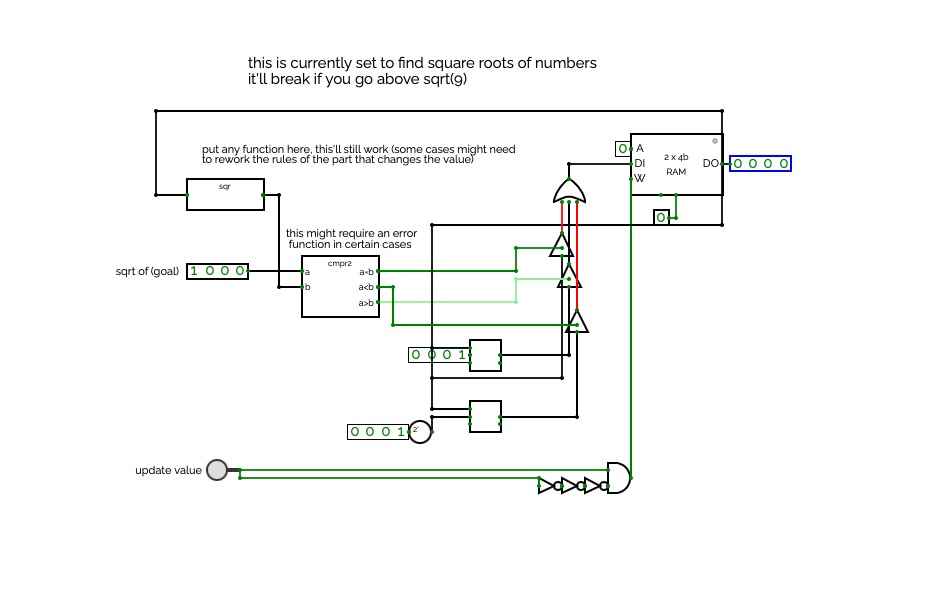simple gradient descent
simple gradient descentI made this in a study hall, it uses gradient descent to find the square root of any number, although it's only 4 bits. This is a proof of concept for my gradient descent, and it can be modified to find the solution to many other mathematical problems, (in my case, minimizing the error function of a neural network im working on).








